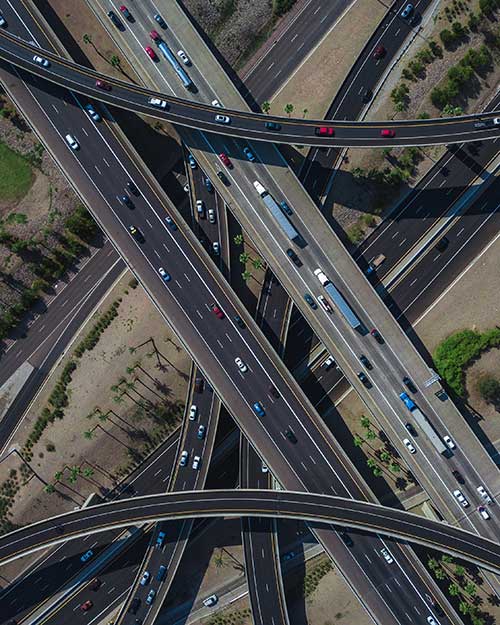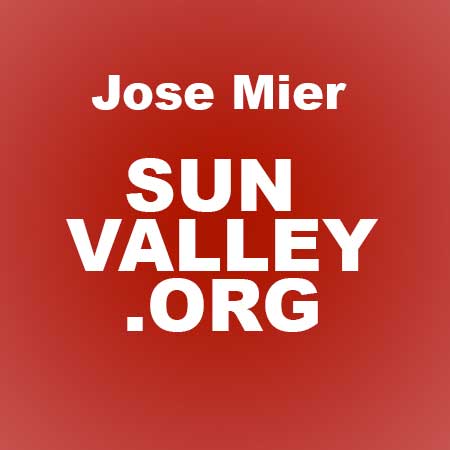Part of California’s Vast Infrastructure
Jose Mier regularly touts Sun Valley freeways and access to them, but our Southern California freeways are only part of the state’s huge network of federal and state highways.
California’s freeway systems are an integral part of the state’s transportation network, playing a crucial role in connecting its diverse regions and supporting the movement of people, goods, and services. As one of the most populous and economically significant states in the U.S., California’s freeway system has undergone significant development and expansion over the years to accommodate its growing population and address various transportation challenges. In this essay, we will explore the history, development, challenges, and future prospects of California’s freeway systems.

- Historical Context (Pre-Interstate Era): California’s freeway system has its roots in the early 20th century when the state began to prioritize road construction and automobile infrastructure. The automobile’s rising popularity led to the need for better roads, and California’s vast land area and decentralized urban centers called for a robust transportation network.
In the 1930s, the California Division of Highways (later known as the California Department of Transportation or Caltrans) started planning and building state highways. Some of the earliest and most iconic routes were established during this period, including the Pacific Coast Highway (State Route 1) along the scenic California coastline.
- The Interstate Highway System (1950s – 1970s): The advent of the Interstate Highway System in the 1950s marked a transformative era for California’s freeway development. This nationwide network of high-speed highways, authorized by the Federal Aid Highway Act of 1956, aimed to enhance national defense, support economic growth, and improve interstate travel.
California played a crucial role in this development, given its size and population. The state’s urban centers, including Los Angeles, San Francisco, San Diego, and others, saw significant expansion and faced growing traffic congestion. As a result, numerous interstate freeways were constructed to link these cities and improve regional connectivity.
One of the most ambitious and influential freeway projects was the construction of Interstate 5 (I-5), running from the Mexican border to the Oregon state line. I-5 became a major artery for commercial and personal transportation, facilitating trade, tourism, and economic growth.
- Freeway Expansion and Challenges (1980s – 2000s): In the following decades, California’s freeway system continued to expand to accommodate its burgeoning population. The state faced numerous challenges, including funding constraints, environmental concerns, and the need to balance road construction with urban planning.
During this period, public transit projects like BART in the San Francisco Bay Area and the Los Angeles Metro Rail also gained traction, as authorities sought to provide alternative transportation options and alleviate congestion.
However, despite these efforts, traffic congestion remained a persistent issue in major urban areas, especially in the Los Angeles metropolitan region. Freeways like the 405 and the 101 became notorious for gridlock during rush hours.
- Sustainability and Modernization (2010s – Present): In recent years, California has shifted its focus towards sustainability, environmental conservation, and smart transportation solutions. State policies encourage the development of public transit, carpool lanes, and initiatives to promote greener commuting options.
The California High-Speed Rail project, envisioned as a state-of-the-art rail system connecting major cities, is an ambitious attempt to reduce reliance on highways and curb greenhouse gas emissions. However, the project has faced financial and political challenges, leading to debates over its feasibility and long-term impact.
Additionally, technological advancements have played a role in modernizing California’s freeway systems. Intelligent Transportation Systems (ITS) incorporate technologies such as real-time traffic management, electronic tolling, and connected vehicles to enhance safety and efficiency.
- Future Prospects: Looking ahead, the future of California’s freeway systems will continue to be shaped by various factors. Sustainable and efficient transportation solutions will remain a priority, with a focus on reducing emissions, promoting electric and autonomous vehicles, and further developing public transit.
The state will likely face continued challenges related to funding and maintenance, as aging infrastructure requires ongoing investment to ensure safety and functionality. Balancing development with environmental preservation will also be essential, as California is prone to natural disasters like earthquakes and wildfires.
Moreover, as urban areas expand and the population grows, smart urban planning and transportation management will become increasingly critical. Land use policies that encourage mixed-use development and prioritize public transit accessibility can help create more sustainable and livable communities.
In conclusion, California’s freeway systems have evolved significantly since their inception, playing a vital role in the state’s economic prosperity and cultural identity. From the early highways to the modern interconnected networks, these roadways have shaped the way people live, work, and travel in California. While challenges persist, the state’s commitment to sustainable transportation and technological advancements offers hope for a more efficient, environmentally friendly, and connected freeway system in the future.

